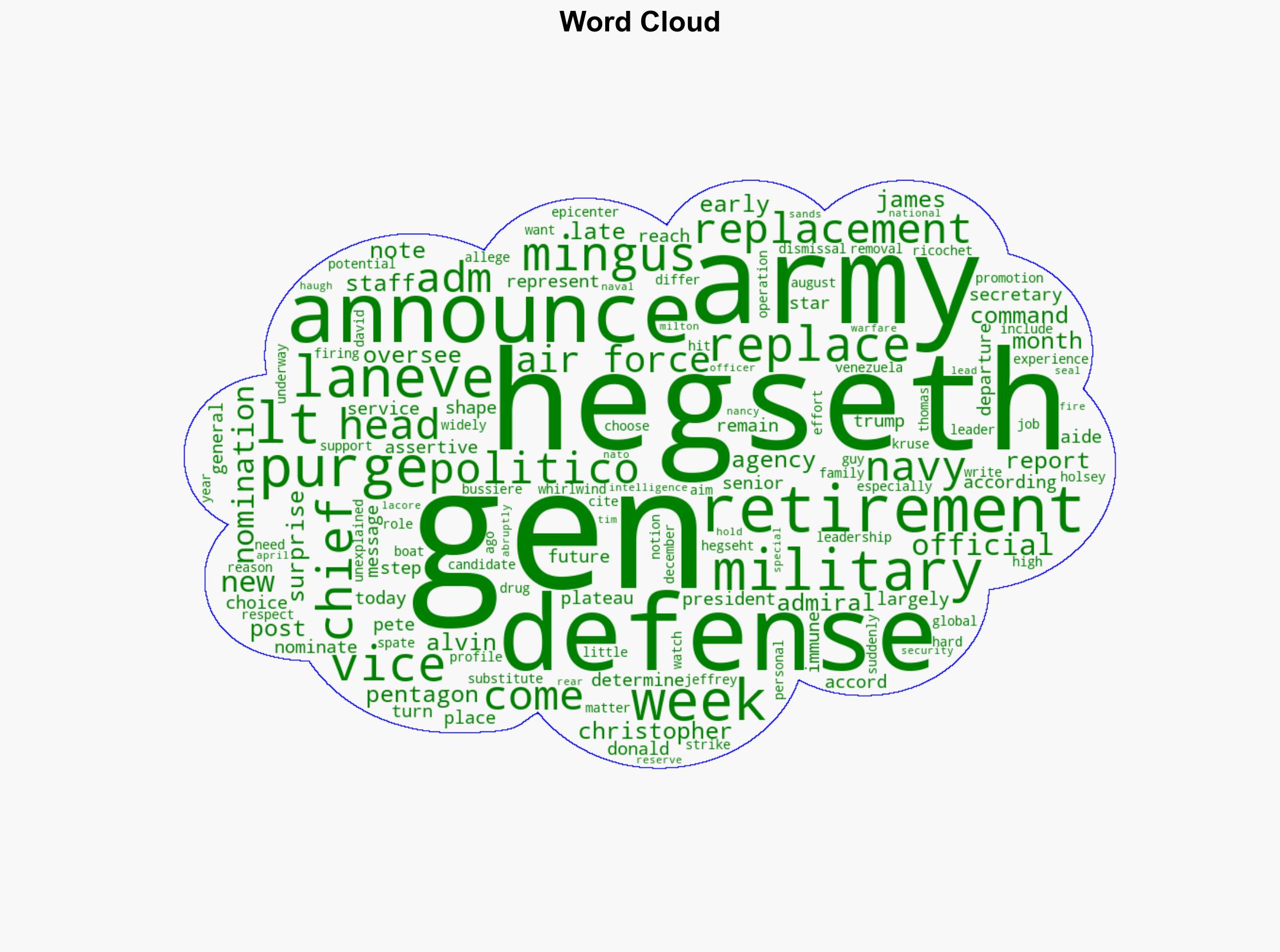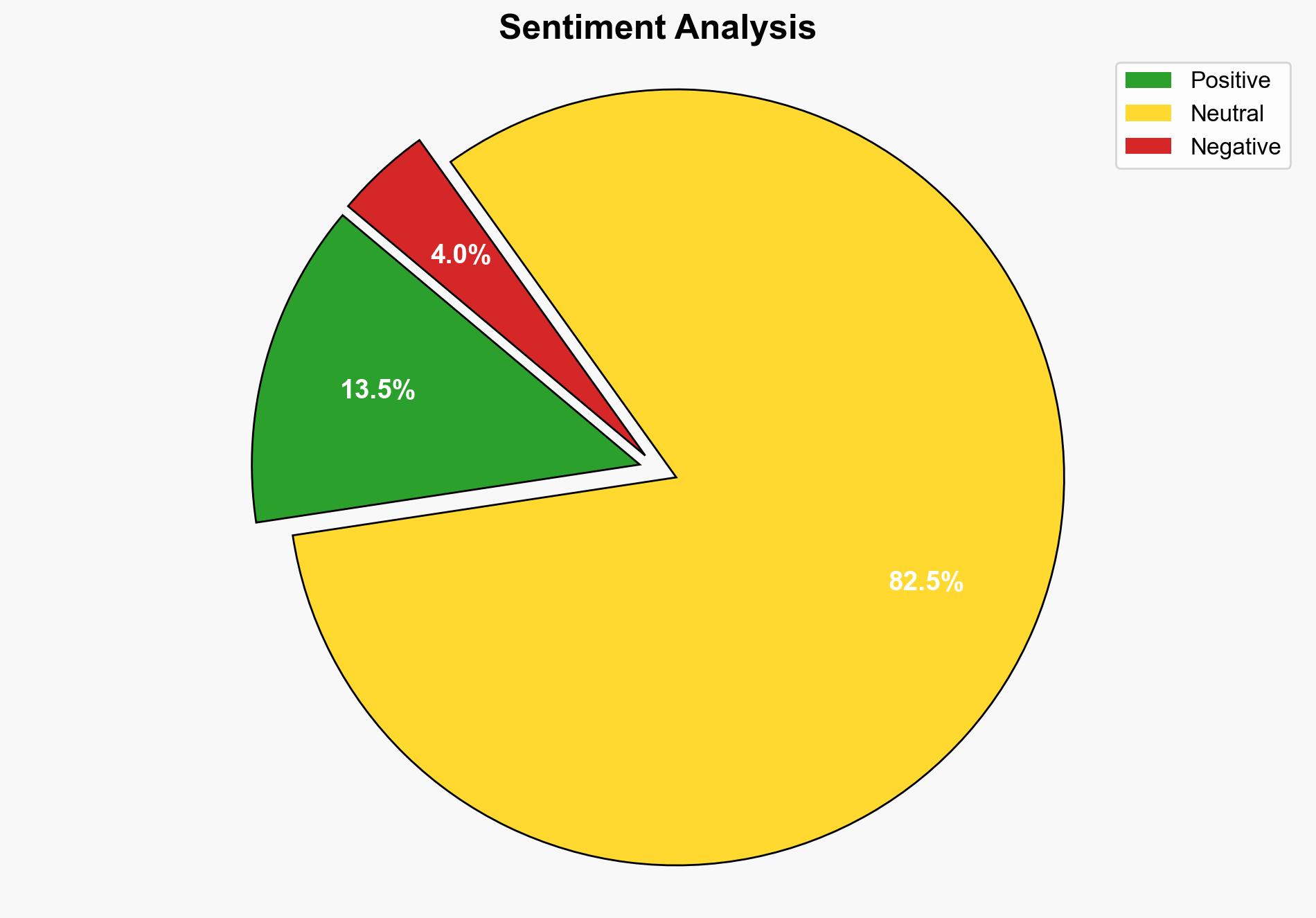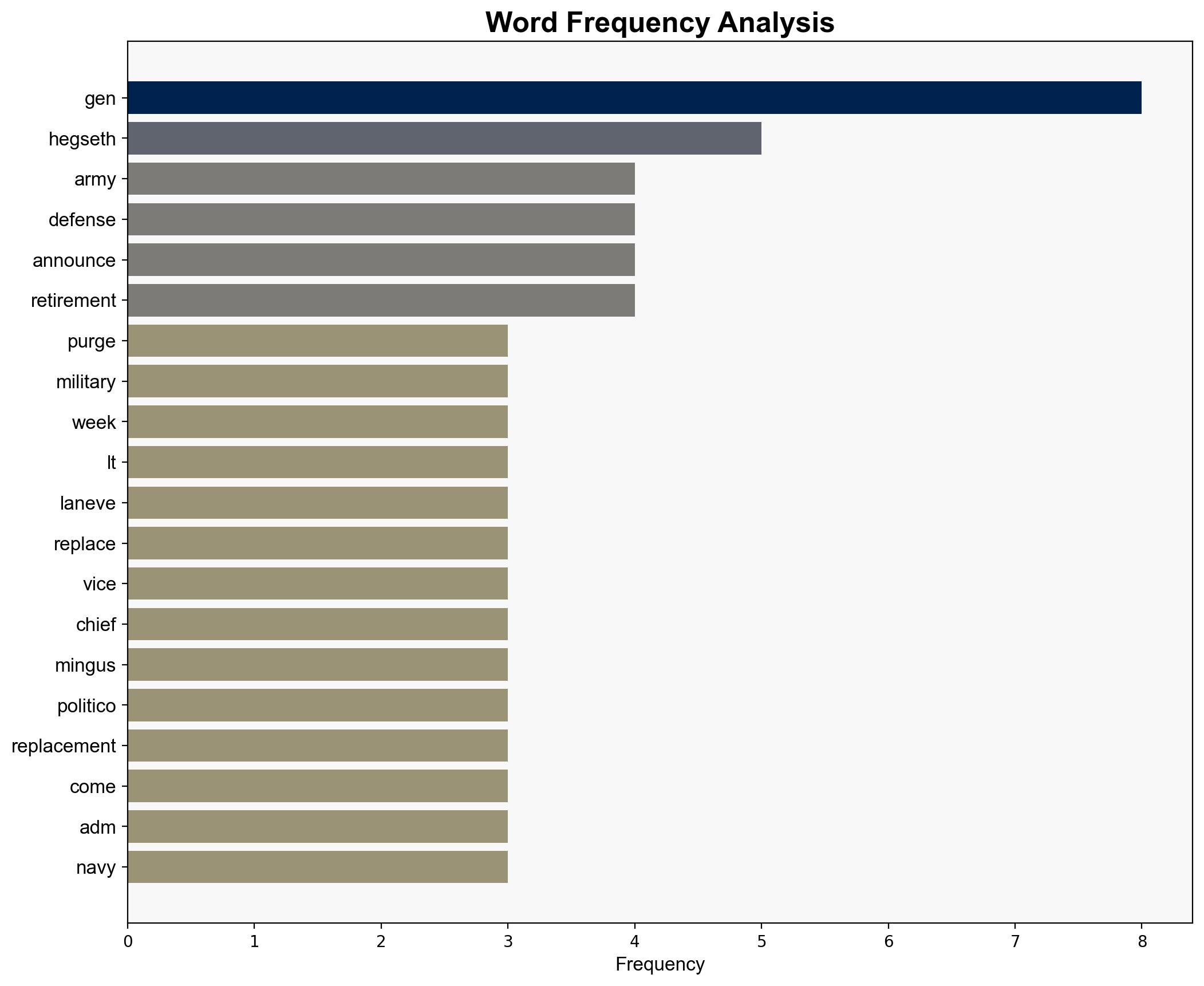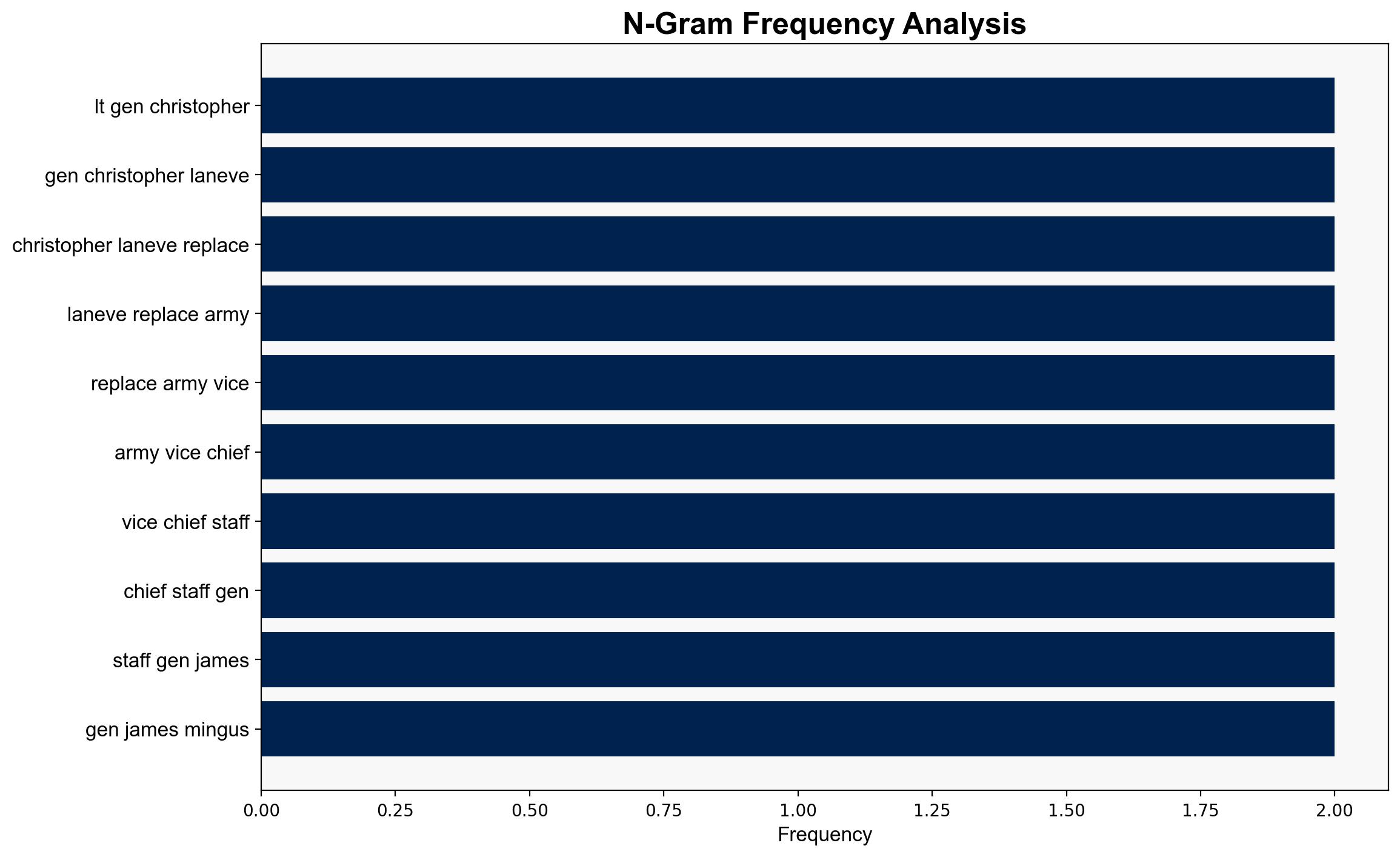Hegseth’s stunning ouster ‘ricochets’ through Pentagon and hits Army ‘especially hard’ – Raw Story
Published on: 2025-10-25
Intelligence Report: Hegseth’s stunning ouster ‘ricochets’ through Pentagon and hits Army ‘especially hard’ – Raw Story
1. BLUF (Bottom Line Up Front)
The most supported hypothesis is that the recent changes in military leadership, including the ouster of Pete Hegseth and other high-ranking officials, are part of a broader strategic realignment within the Pentagon aimed at consolidating control and aligning military leadership with current administration priorities. Confidence level: Moderate. Recommended action: Monitor further leadership changes and assess their impact on military readiness and strategic objectives.
2. Competing Hypotheses
Hypothesis 1: The leadership changes are part of a deliberate strategic realignment by the current administration to ensure military leadership is aligned with its policies and objectives. This includes replacing long-standing leaders with individuals perceived as more compliant or aligned with the administration’s vision.
Hypothesis 2: The changes are coincidental and driven by individual circumstances such as retirements and personal decisions, rather than a coordinated effort. The perceived pattern is a result of normal turnover and unrelated personal choices.
3. Key Assumptions and Red Flags
Assumptions for Hypothesis 1: The administration has a clear strategic vision that necessitates leadership changes. There is a coordinated effort to implement this vision.
Assumptions for Hypothesis 2: The turnover is typical for military leadership, and the timing is coincidental.
Red Flags: The rapid succession of high-profile retirements and dismissals could indicate underlying issues not publicly disclosed. Lack of transparency in the decision-making process raises concerns about potential hidden agendas.
4. Implications and Strategic Risks
The pattern of leadership changes could lead to instability within the military if perceived as politically motivated, potentially affecting morale and operational effectiveness. If the changes are part of a strategic realignment, they could enhance the administration’s ability to implement its defense policies. However, if mismanaged, it could lead to a loss of experienced leadership and institutional knowledge.
5. Recommendations and Outlook
- Monitor further leadership changes to assess alignment with strategic objectives.
- Engage with military leadership to ensure continuity of operations and address morale issues.
- Scenario-based projections:
- Best Case: Leadership changes lead to a more cohesive and strategically aligned military.
- Worst Case: Perceived politicization leads to internal discord and reduced operational effectiveness.
- Most Likely: A period of adjustment with potential short-term disruptions, stabilizing as new leadership settles.
6. Key Individuals and Entities
Pete Hegseth, Christopher LaNeve, James Mingus, Alvin Holsey, Thomas Bussiere, Jeffrey Kruse, Nancy Lacore, Milton Sands, Tim Haugh, David Alvin.
7. Thematic Tags
national security threats, military leadership, strategic realignment, Pentagon dynamics




